IoT, which stands for “Internet of Things,” is getting more popular every day. This term describes any device that can connect to the internet and send and receive data. As popularity increases, the technologies related to IoT systems are also evolving gradually.
It is thought that by 2025, there will be about 30,9 billion IoT devices in use. Technology in its various forms has the potential to provide tremendous business value.
These days, there are a few other technologies like cloud computing, machine learning, artificial intelligence, data analytics, edge computing, and mobile computing that are quite popular and closely related to IoT. Cloud computing and machine learning are used to collect and analyze data from IoT devices, while AI and data analytics are used to get insights from the data. Edge computing enables devices to process data locally instead of relying on the cloud. If you want to get incredible business value through IoT, here are some technologies that will help you create history.
- LPWANs (low-power wide-area network):
LPWANs are widely used to connect low-bandwidth devices with low bit rates. It is capable of accommodating uplink speeds up to 200 kbps with packet sizes ranging from 10 to 1,000 bytes. Moreover, various other technologies give a long range of LPWANs from 2 km to 1,000 km.
Bluetooth Low Energy, or Bluetooth, is a great wireless technology made for the Internet of Things devices that use little power. Application and IoT software developers are widely using BLE to ascertain connections between devices.
From connecting devices over short distances, such as between smartphones, and wearables, to being used in indoor navigation, healthcare monitoring, and the home automation industry, the IoT has several benefits. BLE can send data up to 50 meters away and uses less power than traditional Bluetooth.
IoT is utilized in the creation of future Cellular (3G/4G/5G) devices. All contemporary communication devices are 3G/4G/5G enabled to provide the user with high-speed internet access. Cellular technologies are used in IoT applications that need to cover a large area, like monitoring and controlling things from afar. The next generation of wireless communication technology should be able to send and receive data faster and with less delay than the current generation.
Zigbee is a popular wireless technology used to connect low-cost wireless electronics. It is made as an open global standard to meet the needs of low-cost, low-power wireless Internet of Things networks. The protocol lets devices talk to each other in different network topologies, and the battery life can last for several years. From home automation to smart home applications, Zigbee is everywhere.
Everyone is familiar with Wi-Fi. We use this to connect our electronic devices to the internet through a second device. It sends a radio signal from the router that we can pick up to connect the device to the internet. Wi-Fi has a great future as in the coming era every device will be Wi-Fi makes this possible by making it easy to connect to the internet on a second device.
- Radio Frequency Identification (RFID)
Radio Frequency Identification (RFID) is a wireless system that includes two components. The first one is the tag, and the second one is the reader. Tags are used to capture radio waves, and later these rays are sent to the reader to detect the location of the tags. These are commonly used in public transport, tolls, logistics, and the identification of animals for the location of the tags.
- MQTT(MQ Telemetry Transport)
MQ Telemetry Transport is a lightweight and straightforward protocol used for messaging. MQTT simply subscribes to and publicizes the design for high latency, unreliable, and low-bandwidth network devices. MQ Telemetry Transport is also the best way to send a large number of sensor messages to platforms for analytics and cloud solutions.
Z-Wave is another wireless technology for networking that is commonly used in IoT systems. It is designed for use in home automation systems and can support a range of up to 100 feet.
- NFC (Near Field Communication)
NFC is a short-range wireless technology that is used for communication between devices. It is frequently utilized in IoT systems for a variety of tasks including the configuration of devices and the handling of payment processing.
LoRaWAN (Long Range Wide Area Network) is a low-power, wide-area network protocol that is used for communication between devices, such as sensors, in the Internet of Things (IoT) space. It is made so that devices that run on batteries can work for many years even though they can talk to each other over long distances. LoRaWAN is an open protocol that is run by the LoRa Alliance, which is a group of more than 500 companies that work together for no profit.
Final thoughts:
The future of IoT is bright and ever-evolving. IoT technologies such as 5G, edge computing, AI, blockchain, and the internet of things platforms are key components in the development of a smarter and more connected world. IoT technologies could change the way we interact with our surroundings by giving us insights, data, and analytics in real-time. As IoT technologies become more common, we can expect to see more attention paid to security, data privacy, and the environment. With the right investments, these technologies can become an integral part of our daily lives, ultimately transforming the way we live, work, and play.
The post Top ten IoT technologies for the future appeared first on .
Tags:
- Internet of things
- Software Development Company
- cellular technologies
- Internet of Things
- iot applications
- Software development company

 .NET MAUI Development
.NET MAUI Development
 Xamarin Application Development
Xamarin Application Development
 React Native App Development
React Native App Development
 iOS Application Development
iOS Application Development
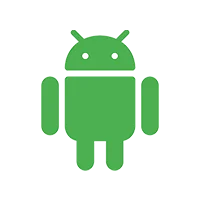 Android Application Development
Android Application Development
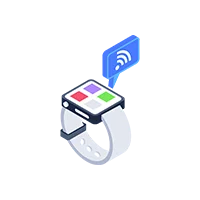 Android Wear App Development
Android Wear App Development
 Ionic Development
Ionic Development
 iBeacon Application Development
iBeacon Application Development
 Universal Windows Platform (UWP)
Universal Windows Platform (UWP)
 Kotlin Application Development
Kotlin Application Development
 Swift Application Development
Swift Application Development
 Flutter Application Development
Flutter Application Development
 PWA Application Development
PWA Application Development
 .NET Application Development
.NET Application Development
 .NET Nuke Development
.NET Nuke Development
 Microsoft Dynamics CRM
Microsoft Dynamics CRM
 Microsoft Small Business Solution
Microsoft Small Business Solution
 VB .NET Development
VB .NET Development
 C# Development
C# Development
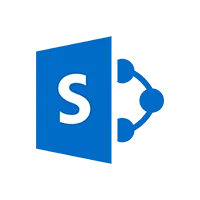 Sharepoint Migration
Sharepoint Migration
 Sharepoint Development
Sharepoint Development
 ASP.NET Core Development
ASP.NET Core Development
 ASP.NET Development
ASP.NET Development
 ASP.NET MVC Development
ASP.NET MVC Development
 Kentico CMS
Kentico CMS
 Umbraco CMS
Umbraco CMS
 AJAX Development
AJAX Development
 Agile Development
Agile Development
 Microsoft Bot
Microsoft Bot
 Microsoft Blazor
Microsoft Blazor
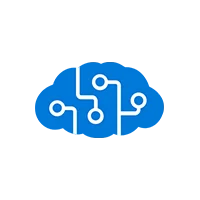 Microsoft Azure Cognitive
Microsoft Azure Cognitive

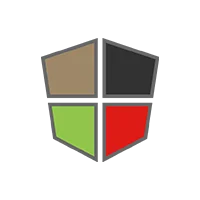 Mean Stack Development
Mean Stack Development
 Vue JS Development
Vue JS Development
 Javascript Development
Javascript Development
 Angular JS Development
Angular JS Development
 Next JS development
Next JS development
 Java Development
Java Development
 Python Development
Python Development
 Django Development
Django Development
 Cherrypy Development
Cherrypy Development
 NodeJS Development
NodeJS Development
 Laravel Development
Laravel Development
 CodeIgniter Development
CodeIgniter Development
 Zend Development
Zend Development
 Ruby on Rails Development
Ruby on Rails Development
 CakePHP Development
CakePHP Development
 PHP Website Development
PHP Website Development
 Symfony Development
Symfony Development
 Drupal Development
Drupal Development
 Joomla Development
Joomla Development
 Wordpress Development
Wordpress Development
 Offshore Software Development
Offshore Software Development
 Custom Application Development
Custom Application Development
 Full Stack Development
Full Stack Development
 AI & Machine Learning
AI & Machine Learning
 Custom CRM Solutions
Custom CRM Solutions
 Flask Software Development
Flask Software Development
 Electron JS Development
Electron JS Development
 ChatGPT Development
ChatGPT Development
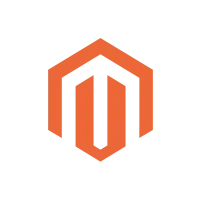 Magento Development
Magento Development
 Magento 2.0 Development
Magento 2.0 Development
 Magento Enterprise
Magento Enterprise
 Shopping Cart Development
Shopping Cart Development
 Prestashop Development
Prestashop Development
 Shopify Development
Shopify Development
 Open Cart Development
Open Cart Development
 WooCommerce Development
WooCommerce Development
 BigCommerce Development
BigCommerce Development
 NopCommerce Development
NopCommerce Development
 Virto Commerce Development
Virto Commerce Development
 AspDotNetStorefront Development
AspDotNetStorefront Development
 RaspBerry Pi
RaspBerry Pi
 Firmware Software Development
Firmware Software Development
 ESP 32 Software Development
ESP 32 Software Development
 Embedded Development
Embedded Development
 Internet of Things
Internet of Things
 Nordic Development
Nordic Development
 HTML 5
HTML 5
 UI/UX Design
UI/UX Design
 Graphic Design
Graphic Design
 Adobe Photoshop
Adobe Photoshop
 XML Application Development
XML Application Development
 Cloud Computing Solutions
Cloud Computing Solutions
 Azure Cloud App Development
Azure Cloud App Development
 AWS Development
AWS Development
 Google Cloud Development
Google Cloud Development
 SQL Programming Development
SQL Programming Development
 MySQL Development
MySQL Development
 MongoDB Development
MongoDB Development
 Big Data
Big Data
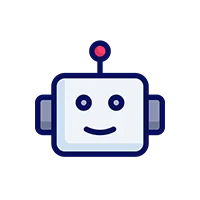 Robotic Process Automation
Robotic Process Automation
 Social Media Marketing
Social Media Marketing
 Search Engine Optimization
Search Engine Optimization
 QA Testing
QA Testing
 Software Testing
Software Testing
 Software Security
Software Security
 Maintenance And Support
Maintenance And Support
 I.T. Consulting Services
I.T. Consulting Services
 Business Intelligence
Business Intelligence
 YII Development
YII Development
 Data Analysis
Data Analysis
 Alexa Skills Development
Alexa Skills Development
 On Demand App for Mobile repairing services
On Demand App for Mobile repairing services
 On Demand App for Car Service Booking
On Demand App for Car Service Booking
 On Demand App for Cleaning Services
On Demand App for Cleaning Services
 On Demand App for Pharmacy
On Demand App for Pharmacy
 On Demand Dedicated Developers
On Demand Dedicated Developers






Leave a Reply